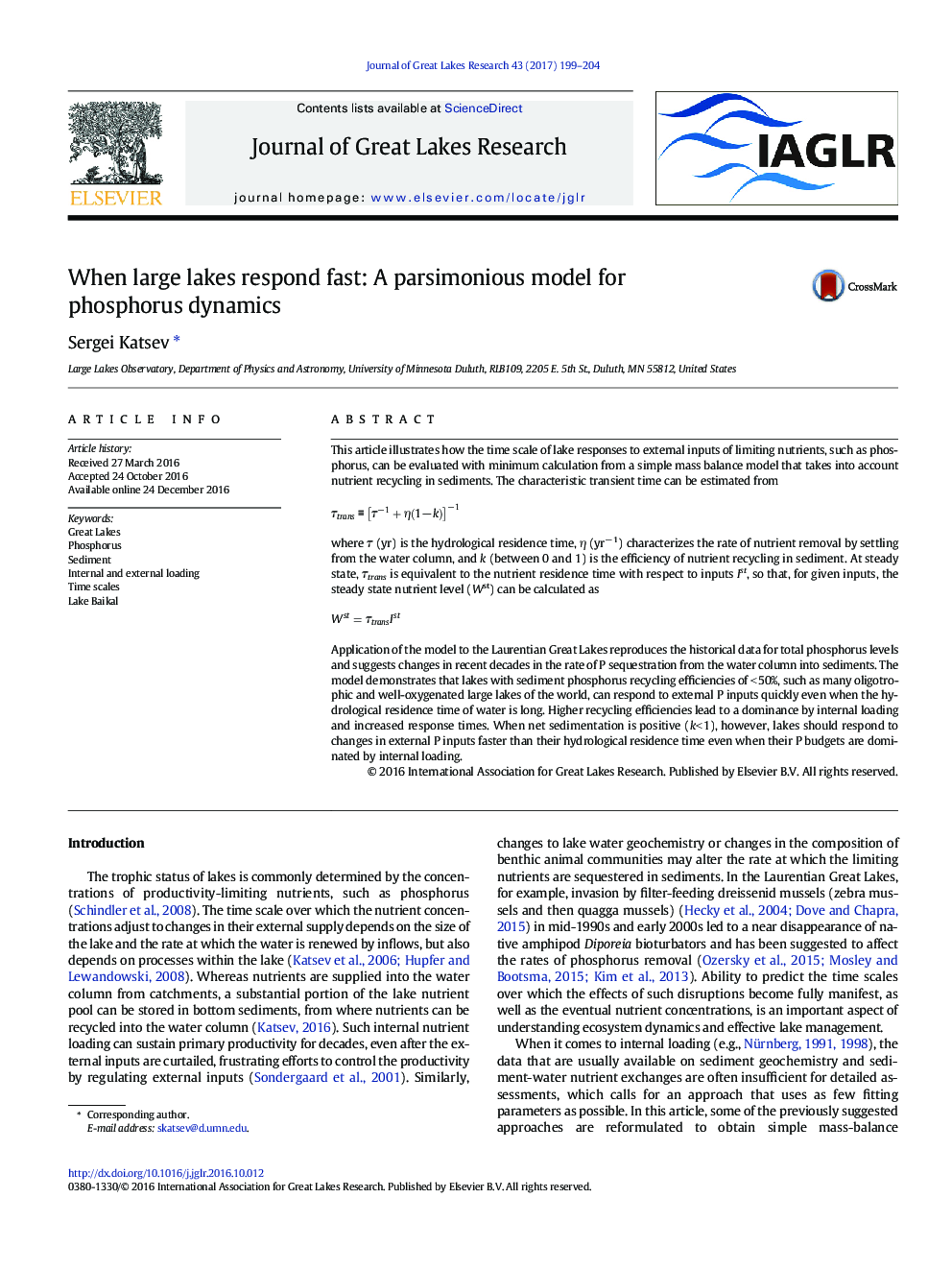| Article ID | Journal | Published Year | Pages | File Type |
|---|---|---|---|---|
| 5744784 | Journal of Great Lakes Research | 2017 | 6 Pages |
This article illustrates how the time scale of lake responses to external inputs of limiting nutrients, such as phosphorus, can be evaluated with minimum calculation from a simple mass balance model that takes into account nutrient recycling in sediments. The characteristic transient time can be estimated fromÏtransâ¡Ïâ1+η1âkâ1where Ï (yr) is the hydrological residence time, η (yrâ 1) characterizes the rate of nutrient removal by settling from the water column, and k (between 0 and 1) is the efficiency of nutrient recycling in sediment. At steady state, Ïtrans is equivalent to the nutrient residence time with respect to inputs Ist, so that, for given inputs, the steady state nutrient level (Wst) can be calculated asWst=ÏtransIstApplication of the model to the Laurentian Great Lakes reproduces the historical data for total phosphorus levels and suggests changes in recent decades in the rate of P sequestration from the water column into sediments. The model demonstrates that lakes with sediment phosphorus recycling efficiencies of < 50%, such as many oligotrophic and well-oxygenated large lakes of the world, can respond to external P inputs quickly even when the hydrological residence time of water is long. Higher recycling efficiencies lead to a dominance by internal loading and increased response times. When net sedimentation is positive (k< 1), however, lakes should respond to changes in external P inputs faster than their hydrological residence time even when their P budgets are dominated by internal loading.
